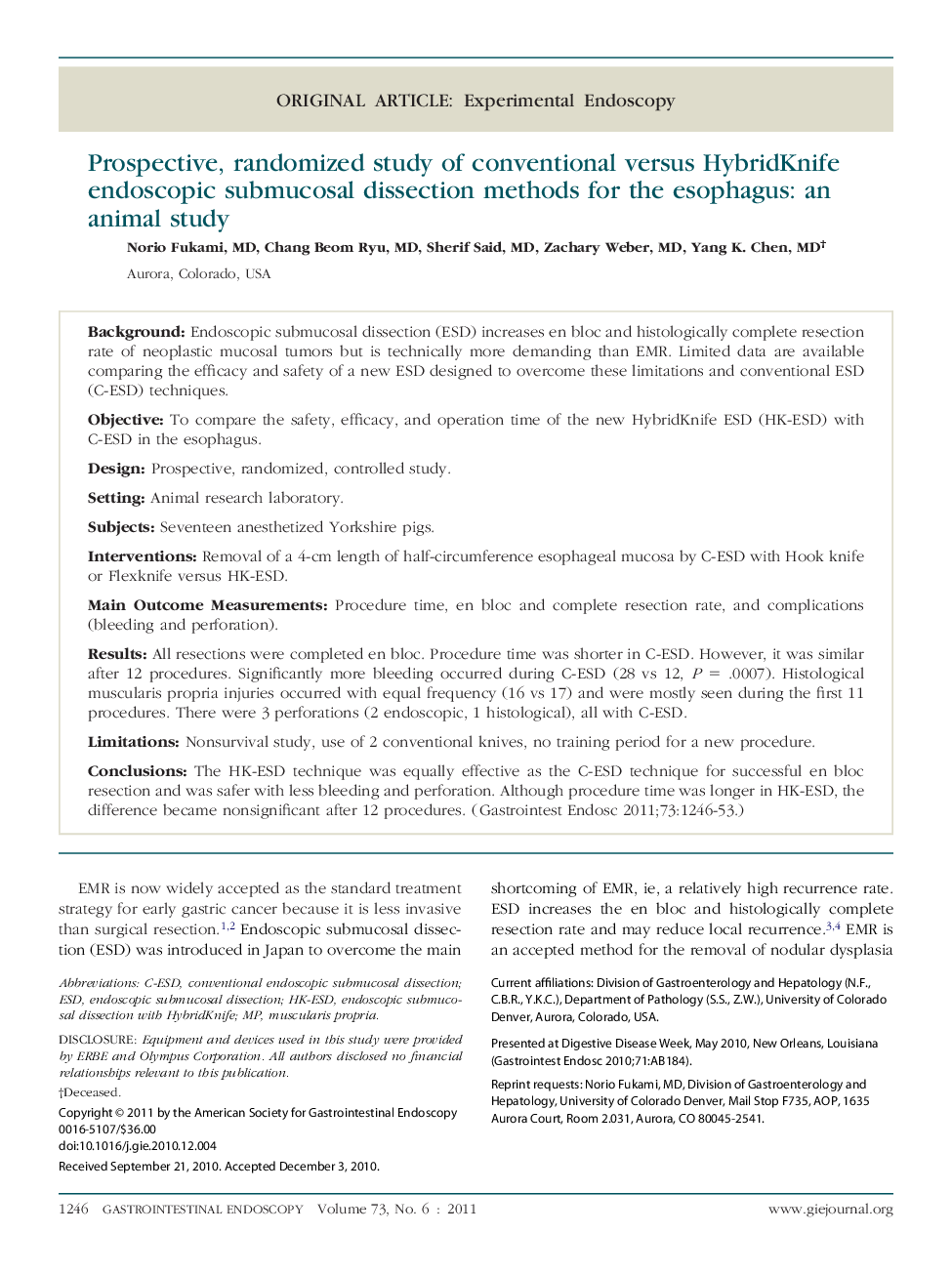| Article ID | Journal | Published Year | Pages | File Type |
|---|---|---|---|---|
| 3303848 | Gastrointestinal Endoscopy | 2011 | 8 Pages |
BackgroundEndoscopic submucosal dissection (ESD) increases en bloc and histologically complete resection rate of neoplastic mucosal tumors but is technically more demanding than EMR. Limited data are available comparing the efficacy and safety of a new ESD designed to overcome these limitations and conventional ESD (C-ESD) techniques.ObjectiveTo compare the safety, efficacy, and operation time of the new HybridKnife ESD (HK-ESD) with C-ESD in the esophagus.DesignProspective, randomized, controlled study.SettingAnimal research laboratory.SubjectsSeventeen anesthetized Yorkshire pigs.InterventionsRemoval of a 4-cm length of half-circumference esophageal mucosa by C-ESD with Hook knife or Flexknife versus HK-ESD.Main Outcome MeasurementsProcedure time, en bloc and complete resection rate, and complications (bleeding and perforation).ResultsAll resections were completed en bloc. Procedure time was shorter in C-ESD. However, it was similar after 12 procedures. Significantly more bleeding occurred during C-ESD (28 vs 12, P = .0007). Histological muscularis propria injuries occurred with equal frequency (16 vs 17) and were mostly seen during the first 11 procedures. There were 3 perforations (2 endoscopic, 1 histological), all with C-ESD.LimitationsNonsurvival study, use of 2 conventional knives, no training period for a new procedure.ConclusionsThe HK-ESD technique was equally effective as the C-ESD technique for successful en bloc resection and was safer with less bleeding and perforation. Although procedure time was longer in HK-ESD, the difference became nonsignificant after 12 procedures.
